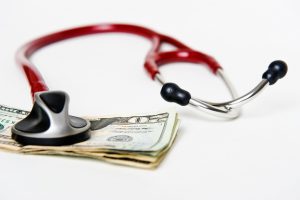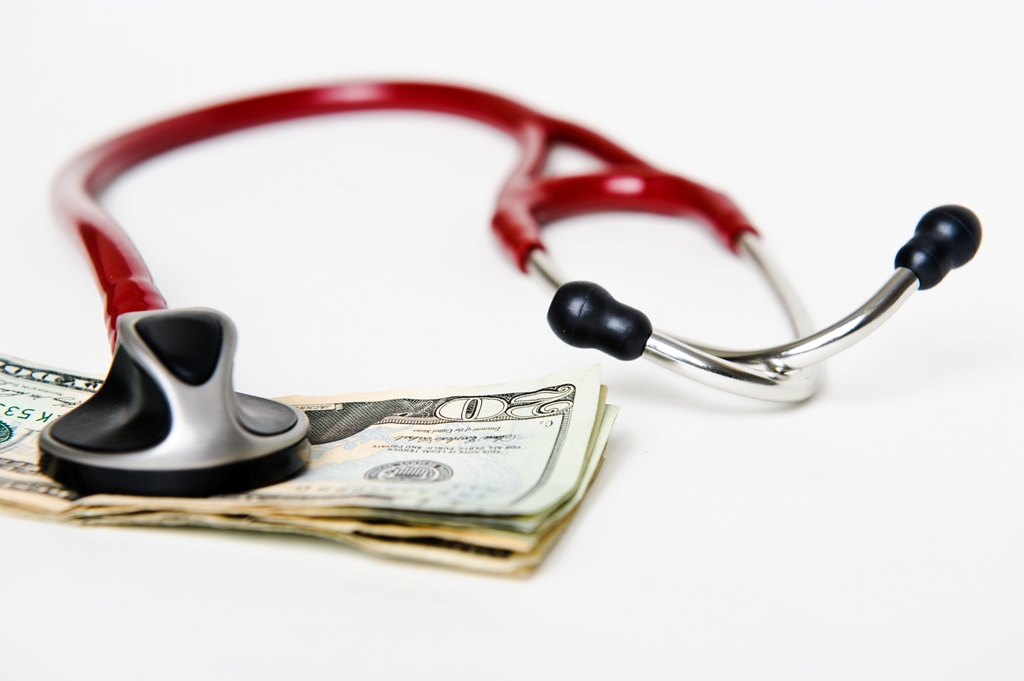
Medical expenses are often a part of life. Families generally try to deal with those expenses by owning health insurance, putting away a “nest egg” or, as a last resort, borrowing.
There are several studies that look at the first two methods, but there is limited research on whether families use unsecured debt to finance health-care expenses. Dr. Patryk Babiarz hopes to change that.
“There is a lot of anecdotal evidence that points to medical spending as one of the most common reasons people declare bankruptcy in the United States, particularly among older Americans,” says Babiarz, an assistant professor in the College of Human Environmental Sciences’ department of consumer sciences. “But, there is no study that evaluates people’s borrowing after an unforeseen health event.”
Babiarz and study co-authors, Drs. Richard Widdows and Tansel Yilmazer, of Purdue and Ohio State University, respectively, used data from the Health and Retirement Study, a comprehensive data source on the physical and mental health of the elderly population and their health-care expenditures, insurance coverage and financial status.
The trio looked at the debt response of 15,204 families from 1998 to 2008 as it related to the onset of certain health conditions, including high blood pressure, diabetes, cancer, lung disease, heart problems, strokes, arthritis or psychological problems. They found that 10 percent were more likely to have unsecured debt following one of the above health conditions. In addition, the families’ debt increased by about 11 percent within a two-year period after experiencing that problem.
“We know for a fact that medical expenses become a larger portion of the family budget as you get older,” said Dr. Gary Hoover, a professor of economics in The University of Alabama’s Culverhouse College of Commerce. “Having a rainy day fund for those types of situations is critical.”

Taking the study a step further, Babiarz divided the families based on their assets. The groupings included very low asset households (bottom 10th percentile), two groups of low-asset households (10th to 30th percentile and 30th to 50th percentile) and wealthier households (those higher than 50th percentile).
He also looked at health insurance coverage, grouping the families into six categories: no insurance, Medicare only, Medicaid only, employer-provided insurance only, other single insurance and multiple insurance.
“When grouping them by assets, we found an increased negative impact on the lower end, or the bottom 10 percent,” Babiarz said. “We did not, however, find significant change in a family’s debt load in the top two categories – the 30th percentile and above.”
The study showed that families with low financial assets had a 23 percent greater chance of having unsecured debt and a 30 percent increase in the debt load. In other words, a debt load of low asset families increases by about $1,030 following a health condition. The elevated debt also remained for many years after the health problem occurred; up to 10 years later, those families’ debt was still 17 percent higher, Babiarz said.
Babiarz also found insurance status to be an important aspect of the effect of health on unsecured debt holdings, especially when the health conditions experienced were severe. Uninsured families were 39 percent more likely to have unsecured debt, with their average outstanding debt growing by 61 percent.
Having insurance does not guarantee 100 percent coverage on everything; there are still uncovered or out-of-pocket expenses that may occur following a health catastrophe, and those costs can be pretty high, Hoover said.
Babiarz’s study showed that families covered only by Medicare still had a 26-percent higher debt load following a health problem. The only families who did not have adverse impacts were those who were covered by multiple insurance plans, Babiarz said.

That’s why having a rainy day fund is “very important,” Hoover said. He encouraged families to start putting money away sooner rather than later, using different savings vehicles – savings bonds, IRAs, mutual funds – based on their level of risk.
“I can’t stress enough that a little bit goes a long way over time. The earlier you can start saving, the better,” Hoover said. “You may not have much, but you really don’t need much.
“When you get to retirement age, typically you’re on a fixed budget, which makes the need (for savings) more critical if you’re uninsured, underinsured or do not have supplemental insurance. Those (uncovered or out-of-pocket) expenses could easily wipe away any savings you were able to pool together,” he added.
Babiarz has presented his study, “Borrowing to Cope with Adverse Health Events: Liquidity Constraints, Insurance Coverage and Unsecured Debt,” at several meetings over the past couple of years; it will publish in Health Economics this year.
His next research venture will look to see if the increased debt load was a result of increased spending needs or loss of income.
“This study really highlights the need for additional research, particularly in light of the aging population and increased need for medical care,” he said. “It also raises concern for a more immediate problem – increasing health care costs. Why do services cost so much?”
